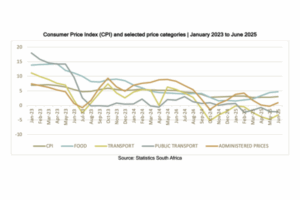At the LRS, we monitor over 70 JSE-listed companies’ financials and more specifically, executive remuneration. This kind of information is useful when bargaining, but also to understand the context in which we are bargaining and working.
South Africa is known for extremely high inequality, and this plays out when assessing executive pay. However, a critical challenge in assessing wage inequality is that JSE-listed companies do not publicly disclose information about the wage gap between their lowest and highest paid workers. This internal wage gap information is considered the most relevant for such an assessment. In the absence of this disclosure, an accepted and consistently usable measure is the executive pay as a ratio of the national minimum wage.
The findings from the FY2023 assessment reveal striking figures regarding these pay ratios. The average CEO pay ratio was found to be 700, while the median ratio stood at 440. But how much is too much? These figures are significantly higher than what is typically recommended for developing countries, where a more equitable and socially responsible range for executive remuneration to minimum wage is between 20:1 and 60:1.
Several companies demonstrate exceptionally high pay ratios for their directors in 2023:
- BHP Billiton: 4895
- Investec: 3153
- AngloGold Ashanti: 2510
- Woolworths: 2316
- Glencore Xstrata: 2043
- Naspers: 2039
- Anglo American plc: 1622
Again, to assess these ratios and salaries, we need to contextualise these vast amounts of money. In 2023 alone, the 73 assessed CEOs collectively earned a staggering ZAR 2.7 billion. To put this figure into perspective, this combined earning could enable the construction of 125 solar-powered microgrids with battery storage in over 100 rural or peri-urban communities that currently lack reliable electricity. Such an investment could provide hundreds of thousands of people with access to clean, stable energy.
Another notable imbalance we see when assessing these CEOs is in the demographic landscape. Within the JSE Top 40 CEOs (2025) females constitute only 10% of these CEO positions, while males account for the vast majority at 90%. Racial representation also shows a significant skew, with 60% of JSE Top 40 CEOs identified as white. Furthermore, nationality data indicates that 25% of these CEOs are non-African nationals.
This, even though studies suggest that companies with more women in executive positions or as CEOs tend to outperform their peers in terms of profitability, market share, and overall shareholder returns.[1]
There is no doubt the executive remuneration in South Africa and more specifically for JSE listed companies is excessive. Not only do these pay structures need an overhaul, but we must consider the representativity of executives in South Africa in order to affect real and lasting change.
Reference
[1] https://www.mckinsey.com/featured-insights/diversity-and-inclusion/diversity-matters-even-more-the-case-for-holistic-impact
RELATED:
The top ten highest-paid CEOs in South Africa







